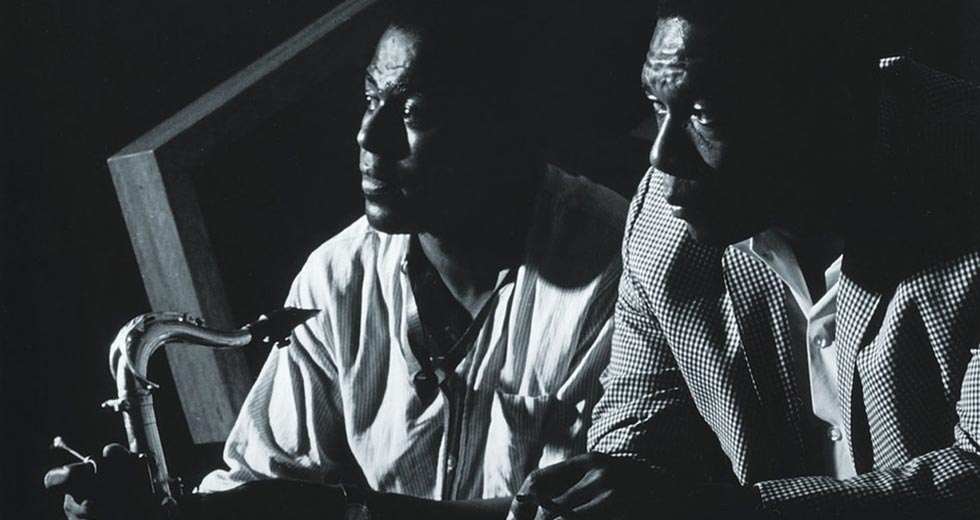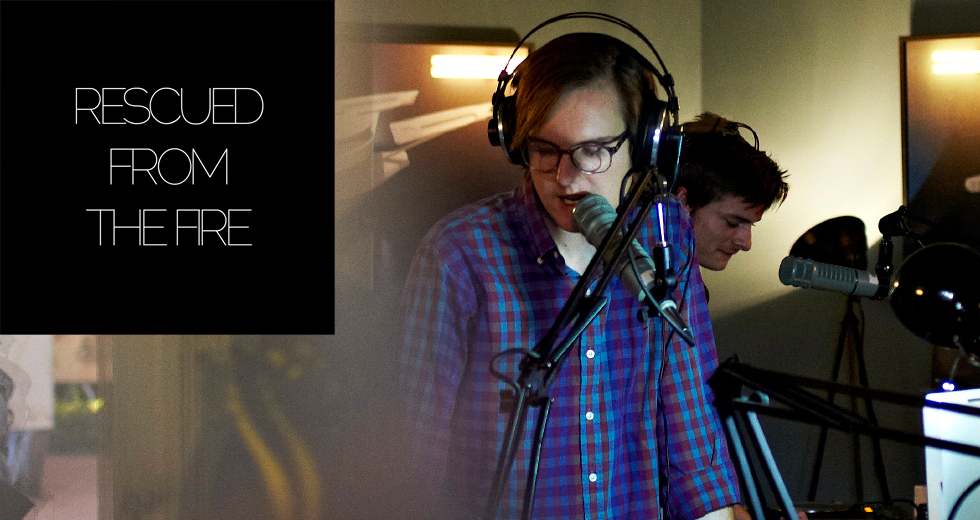Universal Consciousness: The Spiritual Awakening of Alice Coltrane
It was inevitable that the legacy of Alice Coltrane would long be obscured in the massive shadow cast by her husband. John Coltrane, after all, was the most venerated and influential tenor saxophonist in the history of jazz music.
But the closer one examines the genuinely phenomenal life, music and spirit of Alice Coltrane, the more inevitable it seems that she will also someday receive her proper due. The most striking aspect of her biography is that she became a master musician and a spiritual guru in the same way, by carrying forth all her accumulated wisdom in a welcoming synthesis, rather than shedding, judging and discriminating her way to “growth” and “maturity.”
Along this path, Coltrane transformed clichés like “generosity of spirit” and “universal consciousness” into practical implements and palpable goals through the evidence of her music and the abiding example of her devotion. And although it became a singular and generally underappreciated journey, there is some wonderful symmetry in her taking what had been a shared vision with John Coltrane further than anybody would have imagined.
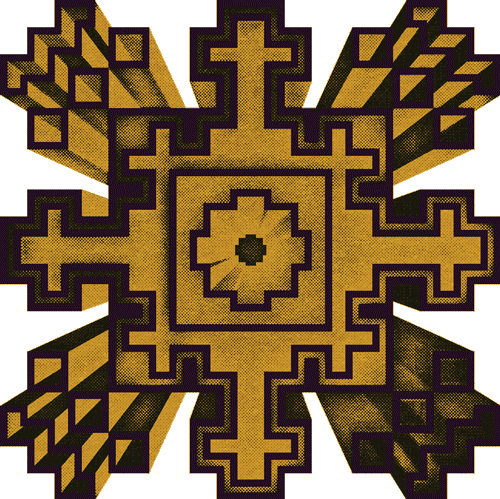
Alice McLeod began absorbing a broad and vivid swath of music and religion at an early age. Her parents directed, played and sang in the choirs at Mt. Olive Baptist Church in Detroit at a time when the city was an industrial hub first for the machinery of World War II and later as a car manufacturer during the economic boom of the postwar era. At her request, Alice began receiving private piano lessons from a neighbor when she was seven. Her performances on piano and organ inspired the congregation to sponsor her music education at a community school.
By her mid-teens she was a prodigy, in demand to perform at other churches, including those that practiced the hand-clapping, foot-stomping call-and-response services more common in the south. According to a story she related to her biographer, Franya J. Berkman, Alice was playing and vocalizing with the Lemon Gospel Singers in a church one day when “The Lord just completely swept through.” She describes worshipers falling out from the visitation, some being attended to by nurses while others were carried downstairs. Alice described this service, and others like it, as “the gospel experience, musically, of my life!”
It was during these postwar years of her teens and early twenties that Detroit became the “motor city,” an industrial boomtown, ushering in what was referred to as a golden era in both gospel and bebop jazz. Through her older half-brother Ernest Farrow, an in-demand saxophonist and later bassist, Alice learned the rhythm & blues spin Detroit’s musicians put on the modern language of bop. She played percussion in her high school marching band, self-taught the sidemen in her own jazz trio, and, whenever possible, tagged along with Farrow to hang out with national-caliber talents such as pianist Barry Harris, bassist Cecil McBee and saxophonist Joe Henderson.
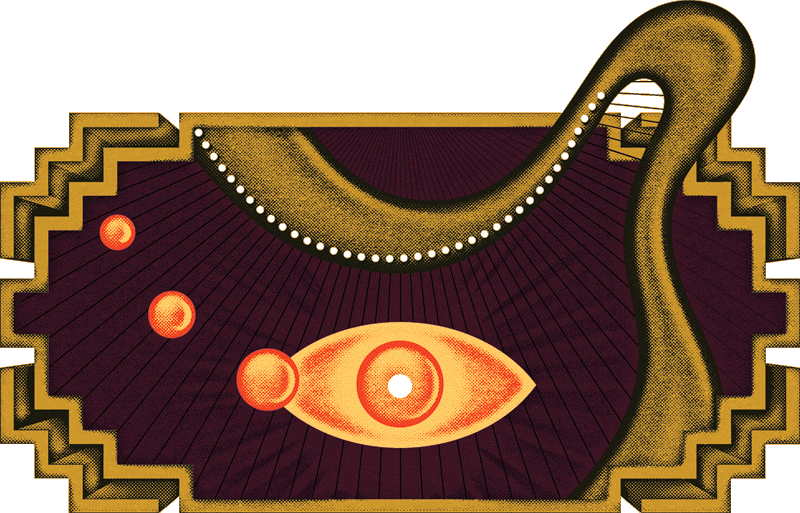
Alice’s first working band was called The Premiers, who performed a blend of gospel, jazz and rhythm & blues and included trombonist George Bohanon, bassist Anthony Jackson and drummer Oliver Jackson, who would each go on to appear on dozens of records. “She was proud to say she was from Detroit,” says Alice’s eldest child and only daughter, Miki Coltrane. “There’s a picture of my mom in church next to this huge organ when she couldn’t have been more than 10 or 11 years old. She used to earn a few dollars playing it and give it to my grandma, Annie McLeod. At high school there was Marvin Gaye and the Gordy kids — the Gordy family [before Berry Gordy founded Motown Records] had a store like a 7/11 down the block.”
In 1960 when she was 23, Alice married Kenneth “Pancho” Hagood, a renowned bebop scat singer eleven years her senior, before the couple relocated to Paris. Their time in Europe was brief — less than a year — but consequential. She became pregnant with her first child, Michelle, now known as Miki Coltrane. She divorced Hagood, Miki’s father, who was besieged by a drug habit. And she spent much of her time studying with the seminal bebop pianist Bud Powell, who became a pronounced influence on her phrasing and approach while also emboldening her to take chances in the music.
This bold confidence impressed Bennie Maupin —a bass clarinetist who was mentored by Alice and later played on Miles Davis’ Bitches Brew album — after she returned to Detroit. “Some people play it safe. They play things pretty much the same way every time,” Maupin told Berkman. “Alice never did…she was always reaching for something, you know?”
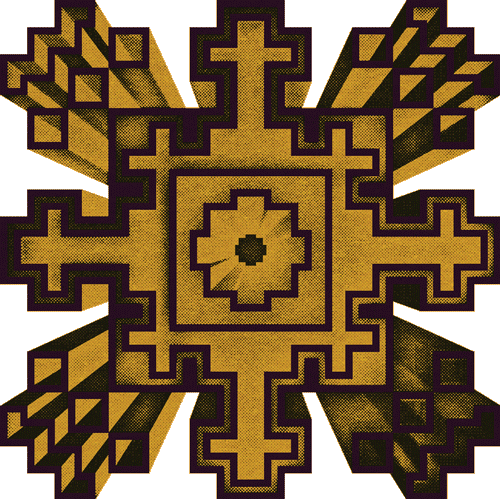
Maupin and Alice also shared a love for a then-new release by John Coltrane, Africa/Brass and together saw Coltrane perform for the first time when he played Detroit in January 1962. After Alice was hired to play in a band led by the vibraphonist Terry Gibbs who was impressed with her Powell-like prowess on piano and the fact that she could also join him on vibes, the group opened for the John Coltrane Quartet during an extended engagement at Birdland in New York in the summer of 1963. That is where John and Alice Coltrane met and fell in love.
There is no question that John Coltrane delved into Eastern spirituality and religion years before he met Alice. “John was very aware of the Vedantic, the Hindi way of reincarnation and other modes of worship and divinity, of the divine being within instead of up on a cloud,” said Ashley Kahn, the author of A Love Supreme, a book about John Coltrane’s classic album. “He had read the Bhagavad Gita and Autobiography of a Yogi, before he met Alice. “But part of their attraction was certainly that she was predisposed to be on the same sort of musical and spiritual quest, and that they could share that path together.” From the moment Alice notified Gibbs that she was quitting his band because John had asked her to go to Sweden with him before they were married, the Coltranes traveled the world, absorbing cultures.
“They both loved Indian instruments, like the tamboura,” Miki Coltrane remembers. “But there were others too; they brought back a koto and some other instruments from Japan. We had bagpipes in our living room.”
They also had children — three sons between 1964 and 1967. At first, motherhood cut into Alice’s musical career. As Kahn puts it, “While John was upstairs [in their house in Fort Dix, New Jersey] meditating and praying five days solid while composing A Love Supreme, she was taking care of the children and supporting him.”
In July of 1967, just four years after he met Alice at Birdland, John Coltrane died of liver cancer. He had been complaining of pain for months, but held off seeing a doctor and they diagnosed it too late.
They brought back a koto and some other instruments from Japan. We had bagpipes in our living room.
Six weeks before her 30th birthday, Alice was a widower with four children, bereft of her soulmate, family breadwinner and chief outlet for her own musical career. Meanwhile, the counterculture was seizing the popular imagination on a number of fronts, be it the Summer of Love, the heyday of the Black Power Movement, or the vogue of alternative religions and forms of consciousness. The assassinations of Martin Luther King and Bobby Kennedy were just over the horizon. Alice Coltrane was breaking down.
In her spiritual memoir from 1977, also titled Monument Eternal, she describes what seems like a hellish existence from roughly 1968 to 1970. Unable to sleep or eat properly, her weight fell from 118 to 95 pounds. She had hallucinations in which trees spoke, various beings existed on astral planes, and the sounds of “a planetary ether” could spin through her brain and knock her unconscious. Her family was concerned for her health, and more than once she was sent to the hospital due to self-inflicted wounds, including a third-degree burn so awful that her blackened flesh fell off her hand.
The overarching theme of this riveting, frequently gruesome account is not that Alice fell into the nadir of her existence, but rather that she experienced tapas, a vital period of trial, tribulation and transition. She explains tapas as a time of unremitting austerity, designed to cleanse and enhance her spirit. The relentless and yet serene path she followed in the many decades after her prolonged ordeal validates this outlandish interpretation of events.
The music under her own name from this period seems intended to further the musical and spiritual direction of her late husband. The first song on the first record is an elegy entitled, “Ohnedaruth,” the name she gave his spirit, which is the Sanskrit word for “compassion.” The sidemen on the three records from 1968-70, A Monastic Trio, Huntington Ashram Monastery and Ptah the El Daoud, are primarily her late husband’s cohorts.
And yet, even with many stylistic similarities, we can hear Alice beginning to figure out how to fill the enormous void under daunting circumstances. The songs are mostly hers, modal tunes with somber moods. But there is strength and sustenance too. Her playing is more prominent, and often she is performing on the harp John bought her shortly before he died. As with the piano, she is playing the entire instrument, set free on glissando arpeggios that Kahn describes as “very loose, almost like water flowing back and forth, very spiritual and meditative.”
But there is also the soulful, swinging bottom that is the rhythm of the Christian church —one song on The Monastic Trio is explicitly entitled “Gospel Trane.” There is also more overt blues and rhythm & blues than late-period John Coltrane was invoking, luminous piano-blues like the song “Turiya and Ramakrishna” on Ptah the El Daoud. There are the introductory bass ostinatos and squawking jazz horns common to John Coltrane, set off by sparkling harp and mournful piano from Alice, who wrote sophisticated jazz arrangements and improvisations spangled with a dab of funk. Her first three releases are appropriately the music of someone who is not John Coltrane but who loves him and cherishes his art. At the time, many critics heard the root influence but were not ready to relate to or reward Alice’s distinctive embellishments and so dismissed the records as pale imitations.
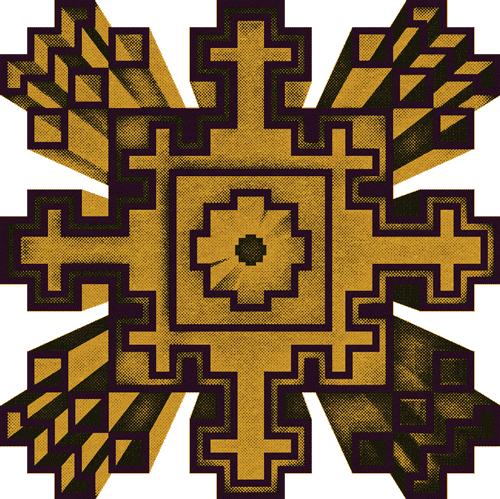
The tapas of austerity helped prepare Alice for a spiritual ally, Swami Satchidanada, an Indian guru introduced to her by another transplanted New York musician from Detroit, Vishnu Wood. Although he was somewhat of a celebrity guru — he came to the United States as a guest of the visual artist Peter Max, and even opened the Woodstock Festival — Satchidanada taught the Hindu philosophy of Advaita Vedanta, which promoted the concept of self-realization, the notion that their soul is not different than god.
Describing this self-realization in a 1988 radio interview, Alice explained, “It just means you go to your fullest and highest potential and not be limited by some tenets of some doctrine that says we come here, here’s the minister, and we pay our tithes and go back to our home or our job or business or whatever and do everything you want.” Advaita Vedanta did not preclude the admission of other faiths — on the contrary it sought to promote global understanding among all religions for people to better serve and love each other, which is the path to their “fullest and highest potential.”
In her Alice Coltrane biography, Franya Berkman makes two incisive observations about Alice’s embrace of Advaita Vedanta. “[A]s an extraordinarily self-disciplined, independent, and inner-directed artist with a strong predilection for religious expression, Alice was uniquely suited to pursue the yogic and devotional lifestyle that the swami advocated,” she wrote. Also: “In its inclusiveness and emphasis on personal potential, Vedanta is similar to the spiritual and creative philosophy that John Coltrane developed.”
The first musical manifestation of this commitment was Journey in Satchidananda, recorded in November, 1970, a month before Alice took her first trip to the holy sites of India with the Swami. From the opening title cut, the arching drone of the tamboura, an Indian stringed instrument played by Tulsi, is pervasive, announcing a new Eastern influence that is further enriched by the oud of Vishnu Wood. Many of the John Coltrane touchstones remain, especially the bass ostinatos from Cecil McBee and Charlie Haden. But even the D-minor blues, “Something About John Coltrane,” feels tinged with Eastern spirituality, as Alice’s soulful piano and the beseeching soprano of Pharoah Sanders falls under the tamboura’s sway.
After she returned home from India, Alice unfurled what is arguably the masterpiece of her commercial recording career with Universal Consciousness, recorded less than six months after Journey in Satchidananda. Voracious in her desire to communicate and receive love and wisdom — and unearth it within herself — Alice added Turiya to her name, the Sanskrit word for “pure consciousness.” Following a divine vision, she also plays the Wurlitzer organ for the first time on record, an instrument that would dominate her religious music in the future. Her extensive liner notes conjoin myths and texts from various religions and read like a gothic melodrama. She composed string arrangements for four violinists and got the great avant garde jazz iconoclast Ornette Coleman to transcribe them. At least two of her original compositions, “Hare Krishna” and “Sita Rama,” are based on traditional chants, another component of her later, privately released work.
Universal Consciousness anticipates the “world music” movement by more than a decade. It is a bountiful blend of a symbolically omnificent organ that absorbs the traditions of the Black church and Indian chanting rituals. Euro-classical strings are embellished and taken further Eastward by the flowing harp passages. The droning tamboura hovers over an ace jazz rhythm section of bassist Jimmy Garrison and drummer Jack DeJohnette, who suggest rhythmic frames and sturdy timbres for the varied meters and chromatic harmonies mushrooming out of the lush mix.

Universal Consciousness became the first album of a trilogy that ended Alice’s relationship with Impulse, the label that contained her husband’s most adventurous recordings and all her own up to this point. Both World Galaxy (recorded in November 1971) and Lord of Lords (the summer of 1972) feature a 16-piece string orchestra, which is used to interpret A Love Supreme, and another John Coltrane-associated work, “My Favorite Things,” on the former record and pieces by Euro-classical composers Stravinsky and Dvorak on the latter album.
The strings are less effective — especially on the John Coltrane pieces — on World Galaxy, which derives its strength from Alice’s protean, ever-shifting instrumentation on organ, piano and harp, and from the saxophone blasts of jazz tenor Frank Lowe. Lord of Lords centers much of its musical energy around the organ (again anticipating Alice’s more overtly spiritual work), especially on her intrepid, jazz-oriented version of Stravinsky’s “Firebird Suite.”
But the crowning glory of Lord of Lords is her reclamation of Dvorak’s “Largo,” from the composer’s New World Symphony. That it was taken by the composer from Negro spirituals he or his assistants heard was made plain when one of his former students transformed it back to a spiritual, entitled “Going Home,” that further evolved into a popular hymn and part of the jazz repertoire.
The Los Angeles-based electronic musician Flying Lotus is a grand-nephew of Alice’s, and in The Pitchfork Review recalls “Going Home” being a popular song frequently played at family funerals, including Alice’s own in 2007.
On Lord of Lords, Alice leads off “Going Home” with harp but switches to organ and executes a driving gospel-blues solo on the instrument accompanied by Haden on bass and [drummer] Ben Riley on drums. The bones of Dvorak’s arrangement are there. The depth, tone and tenor of the piece is restored to its original owners. On her benediction with Impulse, Alice Turiya Coltrane once again didn’t leave anything behind.
After she returned home from India, Alice unfurled a masterpiece: Universal Consciousness.
In 1972, the same year in which she recorded Lord of Lords, Alice relocated to the Bay Area of California, where she founded the Vedantic Center in a San Francisco storefront. Miki, the oldest of her four children, was twelve at the time.
“When we were packing up the house, we were worried about missing our friends, but she said that when she was in meditation [it was revealed to her that] we were supposed to move there,” Miki says. Four years later, when Alice had another revelation, instructing her to abandon the secular life and become a spiritual teacher in the Hindu tradition, the children were first informed by a note on the refrigerator, announcing that her name was now Swamini Turiyasangitananda. By then, Alice had already relocated the Vedantic Center to a house next door to the family home in Woodland Hills, California.
The 1976 revelation instructed her to build an ashram, and in 1983 she opened the Shanti Anantam Ashram on 50 acres in nearby Agoura Hills, California. By their own accounting, Alice’s children were raised well in this intensely spiritual yet occasionally disruptive environment.
“We were required to go to services until we were 18, and to learn all the songs, of course, but she allowed us to be children, giggling and poking each other,” Miki said. “When the students lived next door to us, there were courses given on Wednesdays and Sundays, but the students would also cook and we had get-togethers in the rec room, with chances to play violin or read poetry. Most of them were religious-based, but there was still a family feeling to it. The services were much more amazing at 30 years old than at 15, when you were hurrying to get into the car to go to the beach. But it bloomed into being a uniquely devotional experience.”
When Purusha Hickson first heard Universal Consciousness, he set aside the dishes he was bussing and laid down on the floor to fully absorb it while others covered his shift. It was 1974 and Hickson was a 20-year-old kid who had hitchhiked across the country and was volunteering at One Mind Temple, a San Francisco crash pad serving vegetarian meals in the Fillmore.
“When I heard her music, in my heart I could tell she knew something. I had to meet her,” Hickson said. “People who knew her as Mother Turiya called her up and she said to bring me to see her. She was playing at the 60th birthday of Swami Satchidanada and afterward I got an opportunity to meet her. She was so down-to-earth, with no pretensions, but at the same time there was this spark of light about her.”
Hickson was initiated into the Vedantic Center exactly a year after that meeting, ten days after his 21st birthday in December 1975. He went on to live at the center in Woodland Hills, and later at the ashram. Today he holds a position of honor as the keyboardist in Alice’s stead at the Agoura Hills location, now known as Sai Anatam Ashram.
Hickson had a front-row seat for the changes taking place in Alice’s music. In the mid-to-late ’70s, “she was still playing concerts, but with us she emphasized chanting. She talked about growing closer to god through the power of sound, with the recitation of mantras. And when she played it was otherworldly. Her organ was intense stuff that reminded me of John Coltrane’s saxophone.”

Alice’s move to the West Coast and immersion in religion drew her focus away from commercial recordings. There were collaborations with artists such as Carlos Santana and Joe Henderson, but the first album after Lord of Lords under her own name, Eternity, is a pastiche. Recorded for her new label, Warner Brothers, in the summer of 1975, there are songs overtly connected to rhythm & blues (with her old Premiers bandmate George Bohanon), Afro-Cuban percussion, another bout of strings with Stravinsky, and a series of spiritual tracks albeit with a choir accustomed to Euro-classical singing.
The next two records nestle into devotion to family and self-realization, and are clearly influenced by the revelation that drew Swamini Turiyasangitananda out of Alice Coltrane. Radha-Krsna Nama Sankirtana, from the late summer of 1976, features her leading her students on five traditional Hindu chant-songs, instrumentally accompanied only by her daughter Miki (identified as Michaelle Sita Coltrane) on tamboura for a short track, and her son, Arjuna John Coltrane Jr., on drums during a glorious 19-minute duet on the closer.
Transcendence, from the spring of 1977, features a mesmerizing solo track — “Vrindavana Sanchara” — framed by two other spiritually-infused compositions with a string quartet. But the song-chants with her students on the back end of the album are the real reward, for they crystallize the devotional passions of gospel testimony and Hindu bliss in a riveting synergy.
“She used to tell us to chant from the heart and not worry about mispronouncing names; that if you are calling to god, god will know who you are calling to,” Hickson says. “Even when we were chanting in Hindu, she said you don’t have to sound Indian; just give it that universal feeling.”
She used to tell us to chant from the heart and not worry about mispronouncing names; that if you are calling to god, god will know who you are calling to.
“My mother had a totally different emphasis of attack on the devotional songs,” said Miki Coltrane, singing a chant with the gospel tinge of blues and funk. “Then I went to India and heard all these people chanting and they locked it in in a different place,” she continued, providing the familiar singsong rhythm of traditional Hindu chanting. “It was only then that I realized what she had done — I hadn’t noticed. It was done with respect, but [her chants] had a groove.”
The final commercial recording delivered by Alice in the 20th Century, a live double-album entitled Transfiguration, was at once a throwback to her jazz and classical roots and a forward immersion in spiritual rapture encased in the lineage of her late husband. There is a moving solo piano piece for John Coltrane, entitled, “One For The Father.” “Prema” likewise finds her on piano paired with strings.
The rest of the music is delivered on organ, accompanied by the ace jazz rhythm section of drummer Roy Haynes and bassist Reggie Workman. It culminates in a blistering 37-minute workout of John Coltrane’s “Leo,” utilizing his 12-tone system that he based on the 12 signs of the zodiac. In her Alice Coltrane bio, Berkman claims “her up tempo keyboard work is the most exciting of her commercial career….she takes leave of the jazz business with a truly breathtaking swan song.” The review at Allmusic.com simply says, “If you can own only one Alice Coltrane record, this should be it.”

Another resplendent outlier in Alice’s musical output is Turiya Sings, arguably her most peaceful and soothing album. Originally released only through the Avatar Book Institute four years after Transfiguration in 1982, it is Alice sing-chanting Hindu mantras over organ, strings and synthesizer, the hauntingly beautiful vocals distilled down from a 15-hour recording session.
“When Swamini first started teaching, she never sang. But when we moved to Woodland Hills, there were not as many people around, and she wanted to help us until we gathered more voices,” Hickson related. “But when she came out with Turiya Sings, it was kind of amazing.”
Once the ashram was established in 1983, the music Alice made reflected what was played at services there. Following the South Asian tradition of singing “bhajans”—Hindu texts and chants adapted to music—she went deeper into the form first explored on the spiritual material of her late ’70s albums for Warner Brothers. As with Turiya Sings, for many years, the only way to get Divine Songs (1987), Infinite Chants (1991) and Glorious Chants (1995) was through the Avatar Book Institute or directly at the Sai Anantam Ashram itself.
Each of the records is a little different. Divine Songs has more of Alice’s individual song-chanting, whereas the Infinite Chants is geared toward the choir at the ashram and the driving sway and hand-clapping of the worshipers. Glorious Chants was recorded in the mandir — or spacious temple — on the grounds of the ashram and is probably the most full-throated choir recording.
“Sometimes she obviously had an arrangement she worked on privately, and she would teach us the voicings she wanted to hear from that,” said Shankari Adams, another longtime student and the author of the forthcoming biography, Portrait of Devotion: The Spiritual Life of Alice Coltrane, Swamini Turiyasangitananda. “But the most common process I witnessed was her taking the chanting we did during weekly worship service. That would be the bassline and then she would go into the studio and add layers or tracks to that base line for the devotional music. Sometimes it would be tamboura, or strings, or percussion.” The organ was already there.
“I am a non-musician but she just let us sing from our heart, because what she wanted from the music was the way we were speaking to god, or about god, and the way it touched you,” said another student, Jayalakshmi Moss. “Because of her profound ear, she knew where to place you so were with people who knew music and would be there in front of your face to help you.”
One of the more remarkable things about the Alice Coltrane legacy is how this intensely spiritual music has become something of an underground phenomena. Some of the buzz has been spurred by Flying Lotus, who attended services at the ashram and waxes eloquent about the beauty and power of what Alice was laying down. The availability of this music on Youtube and other sites also exposes more listeners to these unique bhajans. And the record Alice made at the urging of her son Ravi Coltrane — Translinear Light, in 2003 —was another catalyst.
When people talk about reinventing standards, they may go back to the 1920s. Alice was reinterpreting ancient Vedic texts.
Among the influential champions of Alice’s devotional music is Mark “Frosty” McNeill, co-founder of internet radio station Dublab out of Los Angeles. “There is this really unique blend of someone fully devoted but also extremely talented, making records on her own schedule and her own terms,” said McNeill, who is in the process of turning his Alice Coltrane fixation into an audio-literary Masters thesis at USC.
“The actual musical blend continues this idea of universality that both her and John Coltrane had. That means there are not as many boundaries when it comes to the spiritual and the musical,” McNeill says. “The harp is not a common instrument in jazz. The unique string arrangements with the Eastern tonalities and the electric instrumentation are not typically fused — it is unlike anything I have ever heard before. Yeah it sounds like gospel, but then she is singing a Sanskrit chant on top of a soulful Wurlitzer, with synthesizer swells and cosmic sweeps that evoke a big bang creation of the universe.
“I mean, when people talk about reinventing standards for jazz, they may go back to the 1920s. But Alice is reinterpreting ancient Vedic texts that are thousands of years old with her own unique arrangements.”
“I was born an African American Christian,” said Jayalakshmi Moss, “and I can absolutely hear the church in her music. But it is also absolutely unlike anything I have ever heard. Many of us are well-traveled and we have chanted with many fine masters of spirituality. But we all know that her blend is absolutely unique.”
Moss added that there is “lots and lots of music that Alice recorded in our mandir that has not been released, that is uncut. It is sacred and timeless.”
Also unreleased is a huge, ambitious project, involving a year of rehearsals at the ashram because the chanting is done in multiple languages, including Sanskrit, Hebrew and English. It includes extensive arrangements for orchestra and was planned in conjunction with her son Ravi and performed in New Jersey in 2006. The title is The Sacred Language of Ascension, deliberately meant to harken to John Coltrane’s Ascension, perhaps his pinnacle of impassioned sheets of sound. And as recently as this past February 27, there was a sold-out performance of Universal Consciousness at the Portland Jazz Festival, led by Ravi Coltrane and Pharoah Sanders. Nearly a decade after her death, Alice Coltrane is finally in vogue, her once checkered reputation as a jazz artist and musical visionary buttressed for the ages. But then, she always had bigger concerns than what people thought of her.
“People used to ask her all the time, ‘Should I call you Alice or Swamini?’ And she would always say, ‘You can call me either one, whatever you like,’” said Hickson. “She taught us that people start out with an external person, a guru or shaman, but that person will only take you so far,” said Adams. “In the end, people have to make the journey inward, ourselves. Our only real guru is our divine inner spirit.”
Or, as Miki Coltrane puts it, “Most people don’t have the kind of patience, or the kind of belief, that my mother had. She didn’t toot her own horn. She let the universe handle it.”
Illustrations by Robert Beatty
